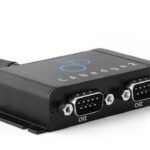The OBD2 connector in your 2000 Acura TL is a crucial port for accessing your vehicle’s computer system to diagnose potential issues. Understanding where this connector is located and how to use it can save you time and money on car repairs. If you’re experiencing car troubles, especially intermittent issues like starting problems or warning lights, the OBD2 port is your first step towards understanding what’s going on under the hood.
Finding the OBD2 Port in Your 2000 Acura TL
Locating the OBD2 connector is usually straightforward. In the 2000 Acura TL, you’ll typically find it under the dashboard on the driver’s side.
Alt text: The driver’s side dashboard area of a 2000 Acura TL, indicating the general location for the OBD2 connector.
It’s often near the steering column or slightly to the left, within easy reach. You might need to crouch down and look under the dash to spot it. The connector is usually trapezoidal in shape with 16 pins. Sometimes it might be hidden by a small plastic cover, which you can easily open or remove.
Understanding the OBD2 System and its Importance
OBD2, or On-Board Diagnostics II, is a standardized system implemented in most cars sold in the United States from 1996 onwards. It’s designed to monitor various vehicle systems, including the engine, transmission, and emissions controls. When something goes wrong, the system generates diagnostic trouble codes (DTCs) which can be accessed through the OBD2 connector using a scan tool or code reader.
This system is incredibly helpful for both car owners and mechanics. For owners, it allows for a preliminary understanding of car problems before taking it to a professional. For mechanics, it provides a starting point for efficient and accurate diagnosis, saving time and labor.
Utilizing an OBD2 Scanner with Your Acura TL
To read the diagnostic codes from your 2000 Acura TL, you’ll need an OBD2 scanner. These scanners range from basic, handheld code readers to more advanced professional-grade scan tools.
Alt text: A handheld OBD2 scanner displaying diagnostic trouble codes on its screen after being connected to a car’s OBD2 port.
Here’s a basic process for using an OBD2 scanner:
- Locate the OBD2 port: As described earlier, find the port under the dashboard of your Acura TL.
- Plug in the scanner: Turn your car’s ignition to the “ON” position (do not start the engine). Connect the OBD2 scanner to the port.
- Follow scanner instructions: Turn on the scanner and follow the on-screen prompts to read codes. Usually, you’ll select options like “Read Codes” or “Diagnostic Codes.”
- Record the codes: The scanner will display any stored DTCs. Note these codes down, as they are crucial for understanding the issue.
- Interpret the codes: Use an OBD2 code database (many are available online or within scanner manuals) to understand what each code signifies. For example, codes often start with a letter (P for powertrain, B for body, C for chassis, U for network) followed by four numbers.
Troubleshooting Car Issues with OBD2 Diagnostics
In the original article, the author describes a starting issue and potential immobilizer or ECU problems with their Acura TL. An OBD2 scan in such a situation can be invaluable. While the OBD2 system might not directly pinpoint an immobilizer fault, it can reveal related engine or sensor issues that might be contributing to the starting problem.
For instance, if there are codes related to the crankshaft position sensor, camshaft position sensor, or fuel delivery system, these could be preventing the engine from starting and might be indirectly related to the immobilizer system’s behavior. Furthermore, checking for ECU-related communication codes can help determine if the ECU is indeed being detected and functioning correctly, addressing the author’s concern about the ECU not being recognized.
Using the OBD2 connector and a scanner is a fundamental step in modern car diagnostics. For a 2000 Acura TL experiencing electrical or starting problems, it provides a data-driven approach to troubleshooting, leading to more informed repair decisions.
